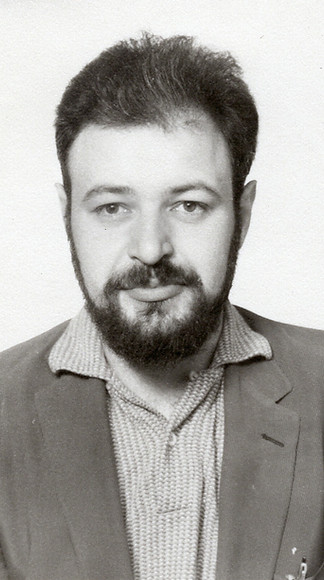
Sid Hammer was an American artist, writer, and activist who invented a printmaking method he called “thermo-intaglio.” Hammer was politically active throughout his adult life and participated in non-violent civil disobedience and other forms of protest throughout the ‘50s and ‘60s, in New York City. Hammer died from a brain tumor in 1969 at the age of 43. There was no posthumous management or exhibition of his works after that. The cataloguing and archiving of Hammer’s work began in the spring of 2018 in a serious attempt to bring awareness of his work.
Hammer was unsettled by visions of a dark future—one that he saw us heading toward at a steady pace. Though much of his work reflects this dystopian vision, he was also fascinated with the everyday routines of the lives of people surrounding him—a thread that carries through much of his work. Hammer worked tirelessly to show the inequities and injustices that he saw around him—both in his art and activism. He felt strongly that if left unchecked, the pain and suffering of his fellow humans would intensify and proliferate. His concern for the direction humanity was headed in drove him to work tirelessly even as his illness consumed him.
Powerful, and at times eerily prophetic in nature—Hammer’s vision, art, and activism are as relevant today as they were during his lifetime. His work challenges the direction we are heading in and is relevant now more than ever. In providing a model of energetic engagement and critical thinking for how to be a part of a democratic polis that urgently awaits our reclamation and restructuring to suit the minds and hearts of the people who are living today.
While these collected works show how Hammer's powerful insight and vision connect us to the cycles of history, where art stands as a means of communication and social change, it also gives us a chance to glimpse into the mind of a man who spent his life dedicated to learning, teaching, creating, fighting and loving—energetically and against all odds.
About the Archive Project
This archive began after Hammer’s wife, Muriel, moved from their Upper West Side apartment to be closer to her son and grandson in Montpelier, Vermont. That apartment was Hammer’s last home and studio before his death in 1969. Most of his work was stored in Muriel’s apartment until the move 48 years after Hammer died.
Along with Muriel the family moved over 140 paintings, 600 prints, and thousands of drawings, illustrations, writing, and many documents of Sid’s to Vermont. Shortly after Muriel’s passing, Hammer’s son Karl and grandson Sid, turned the space that was housing the collection of work into a studio and the task of photographing and archiving the large collection that the family possessed began in the fall of 2017.
Now that The Sid Hammer Archive Project is organized we have begun working to craft Hammer’s story and to select the most significant works to be shown.
